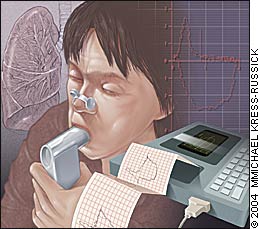
Am Fam Physician. 2004;69(5):1023

Partly inspired by the stomach viruses going around this time of year, and partly inspired by the amount of work on our desks, we've decided to dub this our heartburn issue. Here in these pages you'll find a tour d'horizon of gastrointestinal problems ranging from nausea, vomiting, and intestinal parasites to gastric cancer.
Nausea and vomiting may be caused by a number of medical problems, and treatment ideally consists of correcting the underlying cause. A variety of antiemetic agents are available, and treatment choice depends on the pathophysiology of nausea and vomiting. In the “Clinical Pharmacology” article on page 1169, authors Zachary A. Flake, M.D., Fort Collins (Colo.) Family Medicine Residency Program, Robert D. Scalley, Pharm.D., University of Wyoming (Laramie), and Austin G. Bailey, M.D., Fort Collins Family Medicine Residency Program, review the proper selection of antiemetics. The neurotransmitters histamine, acetylcholine, serotonin, and dopamine frequently are implicated in nausea and vomiting and are the targets of most therapeutic modalities. For a list of the primary classes of antiemetics, as well as specific agents in each class, see Table 1 of the article, on page 1171. The authors also provide a patient information handout on causes and treatment of nausea and vomiting (see page 1176).
The “Practical Therapeutics” article on page 1161 reviews common intestinal parasites in the United States. Corry Jeb Kucik, LT, MC, USN, Gary L. Martin, LCDR, MC, USN, and Brett V. Sortor, LCDR, MC, USN, Naval Hospital Jacksonville (Fla.), discuss diseases caused by Enterobius vermicularis, Giardia lamblia, Ancylostoma duodenale, Necator americanus, and Entamoeba histolytica. E. vermicularis, or pinworm, is the most prevalent nematode in the United States. Diagnosis of pinworm infestation can be made with the “cellophane tape test.” Giardia, which causes nausea, vomiting, diarrhea, malabsorption and weight loss, can be detected through stool ova and parasite studies. A. duodenale and N. americanus are hookworms that cause blood loss, anemia, pica and wasting. Diagnosis is confirmed by demonstrating eggs in the feces. E. histolytica can cause intestinal ulcerations, bloody diarrhea, weight loss, fever, gastrointestinal obstruction, and peritonitis. Amebas also can cause liver abscesses. Diagnostic studies include stool and serologic assays, barium studies, and liver imaging.
In an article on gastric cancer on page 1133, authors John C. Layke, D.O., University of Illinois Metropolitan Group Hospitals, Chicago, and Peter P. Lopez, M.D., University of Miami School of Medicine, point out that although gastric cancer has decreased in frequency over the past half century, it caused over 12,000 deaths last year and represents a leading cause of cancer-related deaths in developing countries. The incidence of distal stomach cancers has declined, while reported cases of proximal gastric carcinoma, including tumors at the gastroesophageal junction, have increased. Early diagnosis of gastric cancer is still difficult because most patients are asymptomatic in the early stages. Weight loss and abdominal pain are late signs of disease progression. Risk factors include chronic atrophic gastritis, Helicobacter pylori infection, smoking, heavy alcohol use, and dietary factors. A patient information handout on stomach cancer is provided on page 1145.